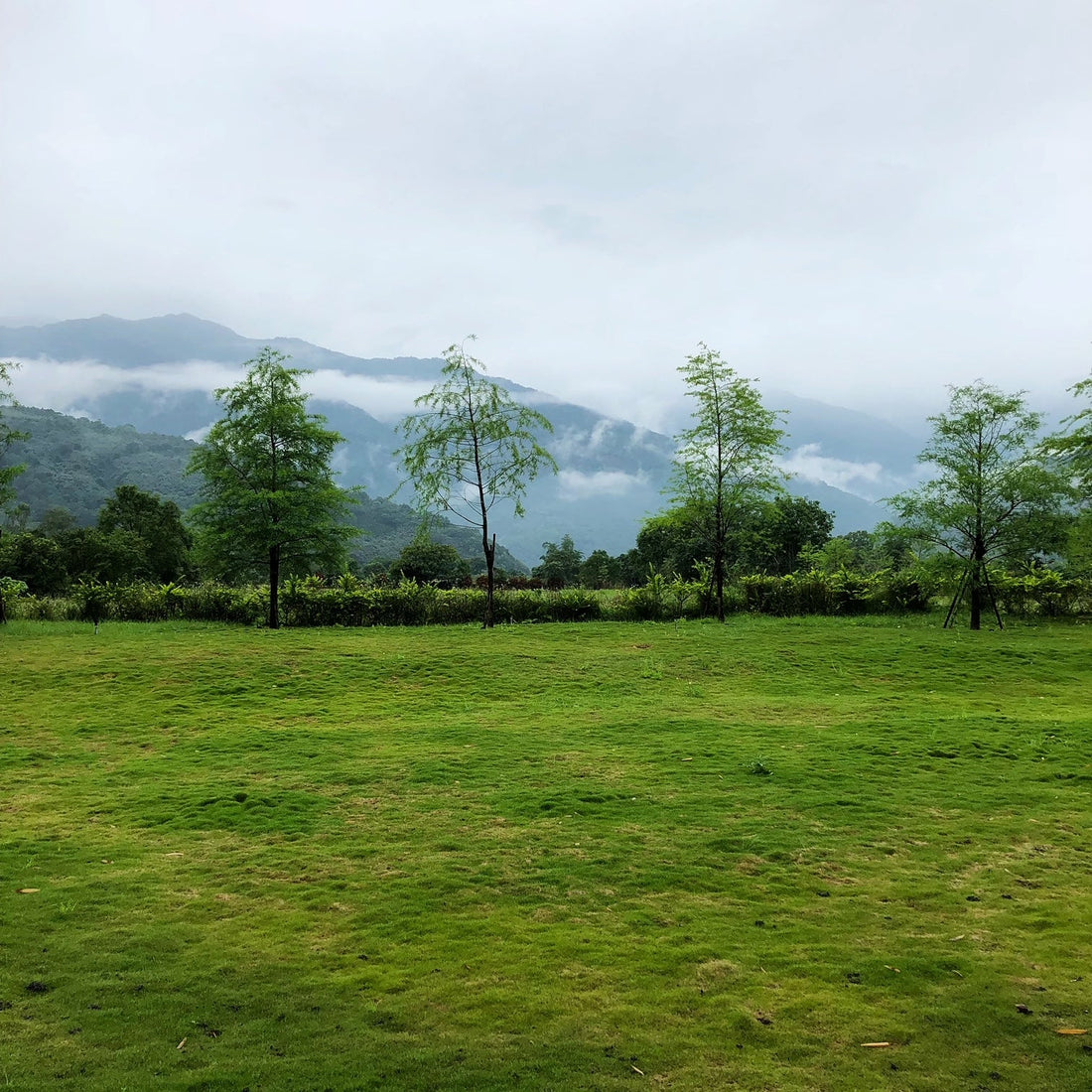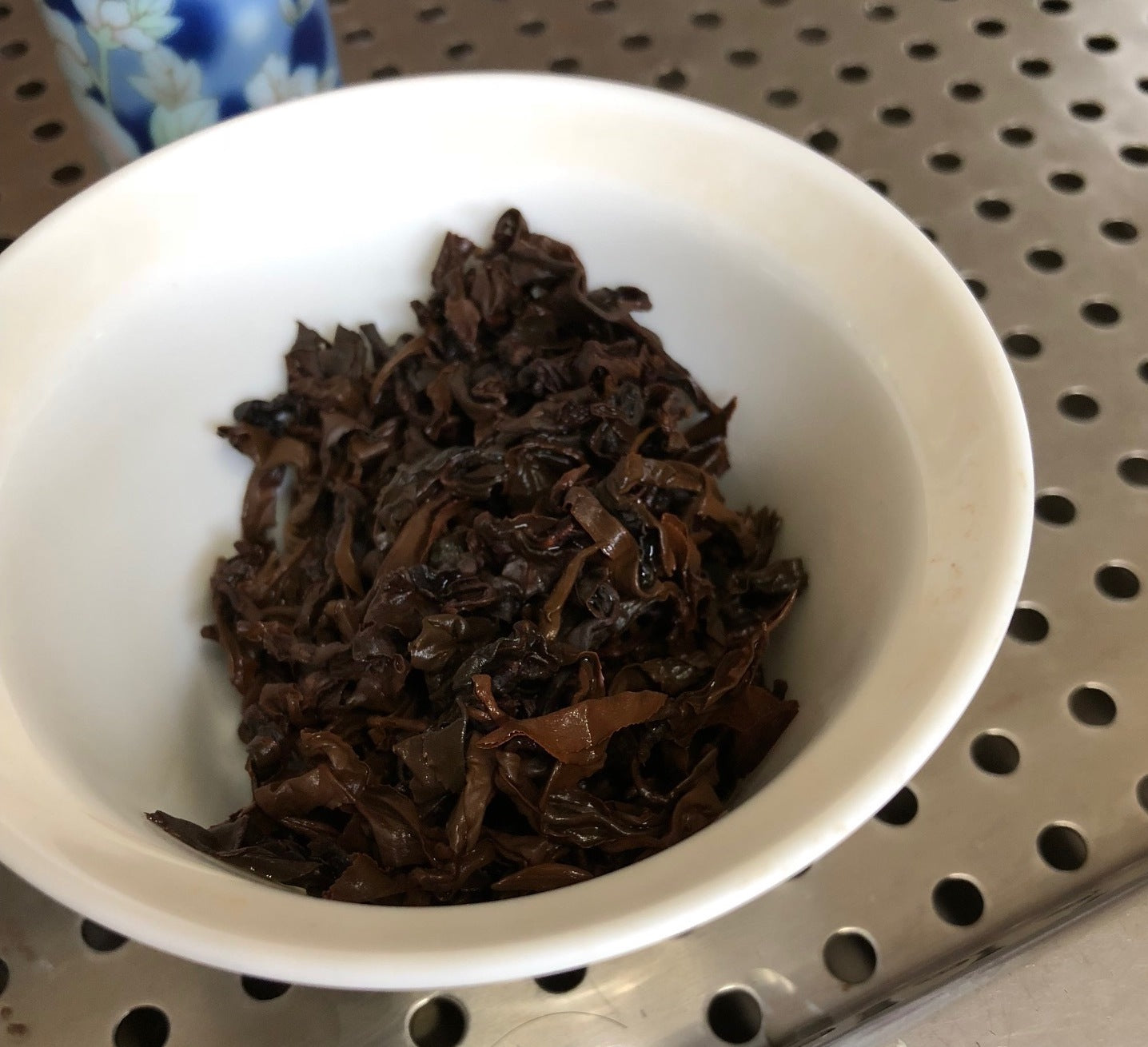
Taiwan Sourcing '23
Welcome to our 2023 sourcing digest. This is a compilation of mini journals from this year's trip to Taiwan. Our typical routine for sourcing is keeping a homebase in Taipei while taking mini journeys to various towns. We've organized our diaries in the same way to summarize our thoughts and takeaway.
The below field notes correspond to our Sourcing Bounty Box. Hopefully you've gotten one to taste along.
Enjoy!
Sanxia, New Taipei City

Taiwan is not known for white tea, but we came across it everywhere on this trip. No producers made strictly white tea, but everyone seemed to be making it on the side. We tried white teas made with wild tea tress, organic tea trees, cultivars typically made black teas and oolongs. There doesn’t seem to be set rules (yet?) on what’s considered “better quality” since the criteria are inconsistent. It was fun tasting them, some were quite delicious, and some were just so so. Regardless of deliciousness, we felt that you could really "taste the cultivar" in a white tea. Here is a favorite we tried from the Sanxia region in the north.

Tea – Assam White
This garden of assamica tea trees were planted during the Japanese era. Its harvest was made into black teas and exported to Japan a hundred years ago. Apparently, our Canyon Green maker has been using this particular lot of harvest to experiment with white tea making. We think they have special talent in lesser processed tea types (green or white teas). This batch captures an elegance from an assamica leaves that's typically bold and brash. We think its woodsy aroma is quite charming.
Pinglin, Taipei


We took some extra time this year in Pinglin to visit a few organic tea makers. Converting a tea region from conventional to organic farming takes a village. Ching-yuan, the cheerleader of organic tea making here in Pinglin, has been working on it for 15 years. We first visited them about 10 years ago and have been watching them mature from afar. They’ve come a long way. Ten years ago, they only had a handful of partnering farms moving from conventional to organic cultivation. Today, there are more than thirty in Pinglin alone. It’s a complicated and difficult road to navigate. Taiwan organic certification is strict (vs the US). To be certified organic it’s not only the tea gardens, but all the machines and equipment that touch the leaves. No amounts of toxic chemical are “tolerable” in the tea sample, the lab report for certification must show “not traceable” for toxicity. It's labor intensive, (hand-weeding, anyone?) and expensive.
Ching-yuan is not one with tea making lineage. They started promoting organic farming for religious reasons - they are part of TOC, a group of devout Buddhists on a mission to preserve every lifeform. Pinglin is one of the main tea regions in Taiwan and is situated by the main water reservoirs responsible for distributing drinking water to local communities, including the capital city, Taipei. Reducing any toxicity where teas are cultivated in this region is a no-brainer. TOC is one of 19 government approved official agencies that certify organic in Taiwan. They also certify other agricultural products, fruits, vegetables and others. We were told they are the strictest agency by many tea farmers. In case you were wondering, Taiwan's organic certification is recognized by the EU and USDA.


Ching-yuan not only promotes the organic way of cultivation – they buy the organic tea harvests to ensure farmers have steady income. They build organic tea processing facilities to produce the finished products for retail or wholesale. Ching-yuan may not be the most experienced tea makers in the industry, but they try the hardest. Organic tea leaves are typically harder to make delicious compared to their conventional counterparts. It's more expensive to produce, and with higher price it's more difficult to be competitive in the marketplace. Their products are often supported by believers and volunteers, each of them trying to make a difference in preserving the land.

Pinglin is part of my childhood memories. We passed by this town when my family made the journey from Taipei to Yilan to visit my grandparents. After spending the morning talking about nature-friendly cultivation, we saw clouds floating into the tea gardens after a giant rainstorm. It was so beautiful! The scenery fills our hearts with joy as we make a commitment to help promote organic teas stateside.

Tea – Organic GABA
Maybe the best GABA we've tasted, not to mention organically grown and produced. The team spent years dialing in their production method. Top secret, I was told. Of all the tea varieties offered by Ching-yuan, this one is my favorite. The aroma is earthy and fruity with a soft tang. GABA is known for its calming character, and we say cheers to function and flavor.
Ruisui, Hualien




Hualien is one of my favorite places to visit and home to the impressive landscape of Taroko Gorge. The little town I'm most interested in Hualien is actually further south from the gorge, closer to Taitung. It's a town called Ruisui. Gentle rolling hills and endless rice farms make the drive impossible to resist. Ruisui is warmer with lower elevation - a happy place for the little tea aphids. Higher temperature makes more delicious black tea - this is the ideal breeding ground for bug-bitten black tea. We weren't able to get our hands on a good batch from this area during our tele-sourcing years of the pandemic. It makes this find a particular delight. We actually didn't need to look far; this family makes our very beloved White Peony.

Tea – Honey Scented Black
Childhood joy! That was my thought when I tried this tea. Fragrant, fruity and naturally sweet like honey. There is a simple wholesomeness to this tea that reminds me of a lanky girl with pigtails and a big smile. She has beautiful freckles; she is unassuming, and almost always in a good mood.
Sun Moon Lake, Nantou


Sun Moon Lake is known for its black teas and famously so for TRES #18 which we named Jade Rouge. We've always told people to visit The Lalu and walk around the lake in early morning hours to take in the beauty of this landscape. Morning sunlight casts a warm glow on the bluish green mountains. I've never seen water move as elegantly as Sun Moon Lake. Chirping birds and yapping cicadas are in your ears. It's the perfect soundtrack. This is where I understood Chinese paintings in the museums - they just painted what they saw because it's flawless, no need to embellish.

Tea – Vintage Black
We don't come across many vintage black teas, so we sampled this one out of curiosity. It is 15 years old, a good batch made by our trusted Jade Rouge maker. According to them, this lot is mostly black tea made with an Assamica variety that was imported from India in the early days of black tea R&D by the TRES. Mossy yet juicy, I think he comes with layers of intrigue, like the early morning mountains surrounding Sun Moon Lake.
Liouguei, Kaohsiung


We took a trip down south in search of small-town Taiwanese flavors. From Tainan, we drove up the steep mountain in Kaohsiung reaching a colorful aboriginal community in Liouguei. Our sources tell us there are tiny batches of tea being made from indigenous wild tea trees. Turns out it was the Japanese officers from the era of occupation who taught this community the basics of tea making. The family sells most of their crop to larger tea collectives but keep a small portion for themselves to produce to finished projects. They make less than ten kilos a year and we couldn't resist bringing some back for you to taste.

Tea – Wild Yellow
This tea came from a plot of indigenous Taiwanese tea trees, untrimmed and barely maintained - think misty subtropical jungle. Entirely handmade, no machines were used to make this batch of yellow tea. Yellow tea is a very unusual style in Taiwan. We think it's quite delicious and special.
Manzhou, Pingtung




We traveled to the southern tip of Taiwan in Pingtung to visit the makers of Seaport Oolong. There are less than a handful of makers, all trace back to the same family sharing the same last name. They split houses a few generations ago and each family makes their tea slightly differently. Some are modern and some prefer the ways of tradition. We witnessed how made teas were “wrapped” back in the day (that’s still how they package it today!). Southern Taiwan is hot and humid all year and harvests happen regularly. Serious rainfall is desperately needed, concerning the community. The weather forecast predicted heavy rain for a week starting the day after our departure. It would be real rain for the first time in two years. We felt their worries and anticipations. At the bus stop, we said a small rain prayer before heading back to Taipei.

Tea: Sediv Oolong
Coastal hillside surrounded by thick ocean fog brings a soft salinity to this tea. This is the unrolled version of Seaport Oolong. This is the version before rolling machines came around and is the style preferred by locals. Brew it on the strong side for a deep aromatic experience. The tannins dissipate over time, in return a rich floral evergreen that fills the palate.
We hope this sourcing digest was able to transport you to Taiwan, away from your daily routine. Perhaps a mini tea vacation.
As we traveled up and down this beautiful island this year, we are reminded of just how much work and heart goes into a batch of tea. We think our teas resemble their makers. Tasting through them is like meeting the cast and characters of Taiwanese tea. The experience is not dissimilar to running a tearoom in the West Village, meeting New Yorkers from all walks of life, all kinds of personalities.
Tea is a beverage about people. It tells the story of humanity and the heritage of a place. It's a historical artifact you can drink. We feel fortunate to be part of its journey. Thank you for spending time with us!
